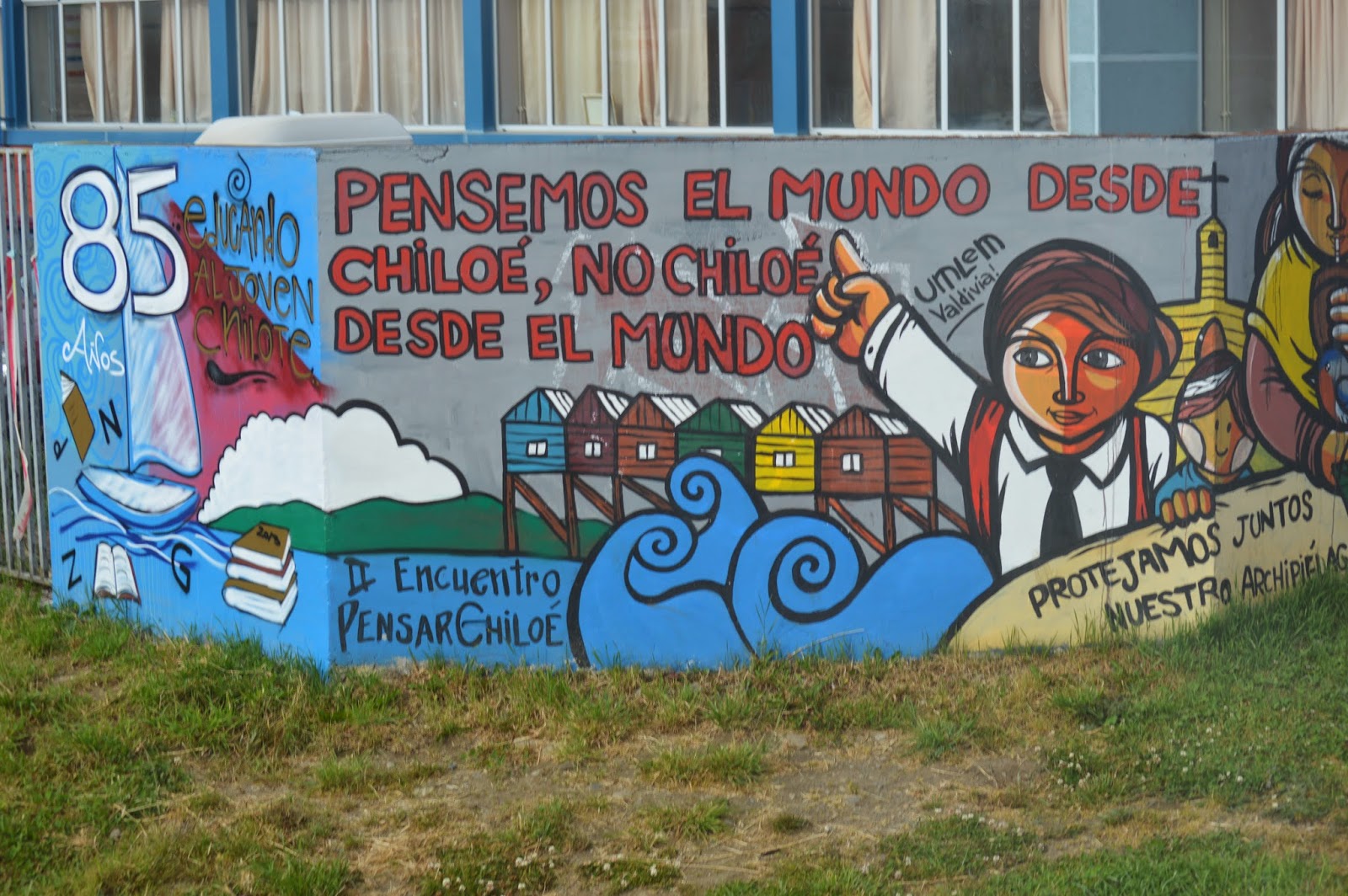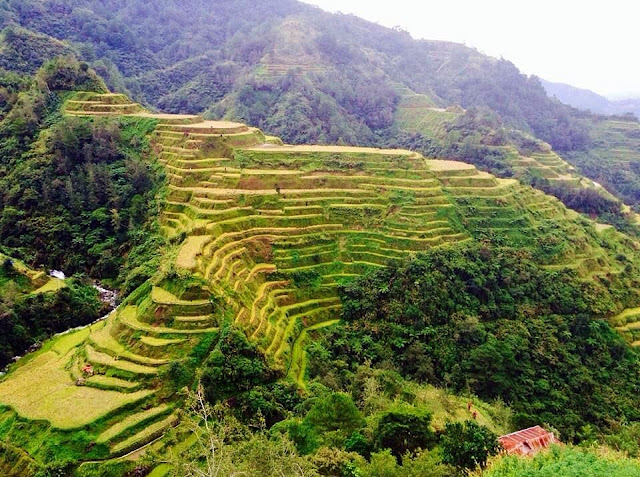Chiloé, Chile: We Think the World from Chiloé
 I wasn’t sure what I was seeing - a graffiti or a mural painting. Our bus was zipping through a relatively busy city street in order to get to the 'Palafitos', a stilt village or dwellings built on bodies of water, one of the famous tourist attractions in Chiloe. I was on a tour in Castro, the capital of Chiloe, a picturesque island with rolling hills and views of the sea and many wooden churches declared as UNESCO World Heritage sites.
I wasn’t sure what I was seeing - a graffiti or a mural painting. Our bus was zipping through a relatively busy city street in order to get to the 'Palafitos', a stilt village or dwellings built on bodies of water, one of the famous tourist attractions in Chiloe. I was on a tour in Castro, the capital of Chiloe, a picturesque island with rolling hills and views of the sea and many wooden churches declared as UNESCO World Heritage sites.We passed the same corner with the painting on our way back from the Palafitos. At that time our bus was stopped in traffic, so I had more time to see the painting and read the words, “Pensemos el mundo desde Chiloé, no Chiloé desde el mundo”. I tried to translate the words, but my translation did not amount to something, perhaps due to my limited knowledge of the Spanish language. But I pondered upon the phrase while our bus made its way outside of Castro for a 30-minute drive to Delcahue, a sleepy pastoral village.
She then mentioned that we were driving along the famous Pan American Highway, the longest road in the world. The highway connects North America to the end of the world. "How is that possible when Chiloe is supposed to be an island," I thought. So I asked if there were any bridges to connect the highway. She explained that there was no bridge and added that there was a plan on building one to connect the island to mainland Chile, but the Chiloeans organized to oppose the building of the bridge. The bridge would have cost a lot of money to build. The organizers big concern was that in order to cover the cost, the government would have offered incentive and financial support to private and multi-national corporations to continue to carry out illegal logging and replace the native forest and bring environmental damage. It was only then that the phrase, "Pensemos el mundo desde Chiloé, no Chiloé desde el mundo”, which translates to, “We think the world from Chiloé and not Chiloé from the world” started to make sense to me. I learned that it was conjured up during one of the community organization meetings to oppose the bridge. "A way of saying - stop being blind to the destruction of our earth; we will take responsibility for our island village of Chiloé ”, said our guide.
We returned to Castro to end our tour of the island with a visit to the MAM (Museum of Modern Art - a farmhouse converted into a museum) and to see Castro's famous landmark, the Church of San Francisco - a neo-gothic church painted in bright purple and yellow, a UNESCO World Heritage site. What I learned from this trip evolved into a reflection on the effect of progress - the nostalgia of witnessing change (specifically from the Palafitos which are converted into hotels) against the backdrop of what endures. The natural world, remains among, the things that are timeless. Likewise art endures. I have not an ounce of authority to talk and write about the politics of the region, but I did find a great deal of compelling images through the arts and culture that inspired me to action to protect and conserve our natural world. And I hope to impart the same inspiration through the power of imagery.
 |
| IT'S SUFFOCATING TO SWIM IN GARBAGE |
 |
|
THE BEAUTY OF
RECYCLING
From the Museum of
Modern Art, Castro
|
 |
“I WONDER ABOUT
THE BATHROOMS”
Palafitos owned by
Hotel establishments, Castro
|
 |
| "REFLECTION" |
 |
“LIFELESS”
Low-tide in Castro
|
 |
“LIFE-GIVING WATER”
High-tide in Delcahue
|




WOW! This is my favorite of your blogs Alice. You are a marvelous writer - most interesting how you captured the essence of a billboard in word and amazing, amazing photographs. I loved it! -Sherry
ReplyDelete